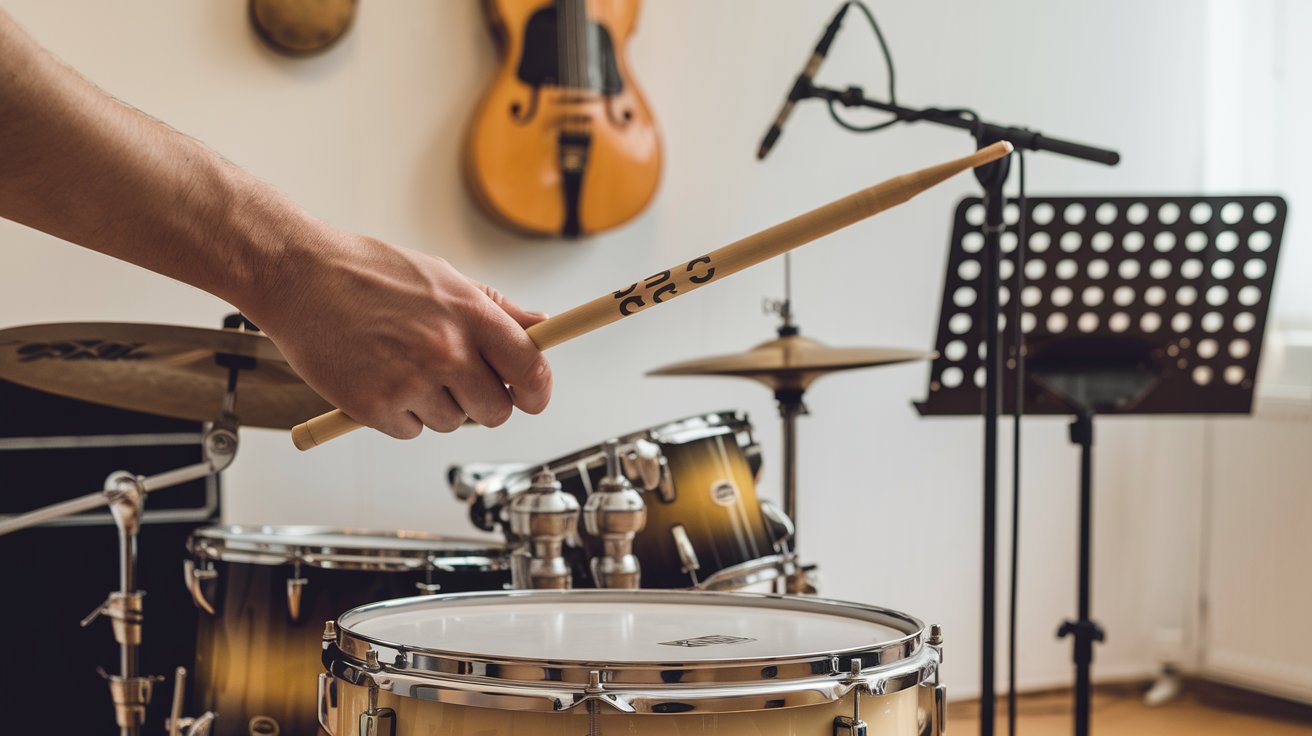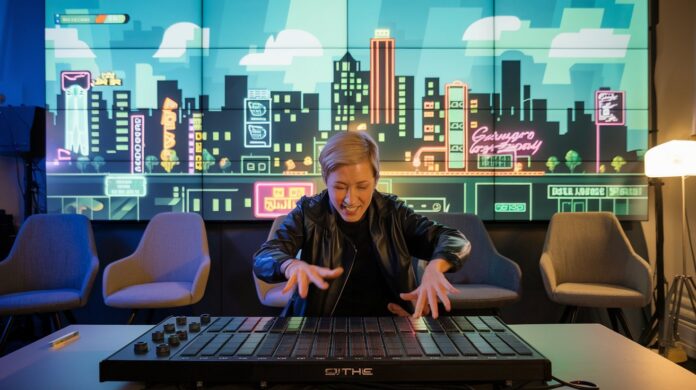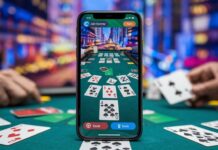Rhythm games have taken the gaming world by storm, captivating players with their infectious beats, vibrant visuals, and adrenaline-pumping challenges. From classics like Dance Dance Revolution to modern hits like Beat Saber and Osu!, these games test your timing, coordination, and reflexes while delivering a fun, music-driven experience. Whether you’re a beginner tapping your first notes or a seasoned player aiming for perfect scores, mastering rhythm games can be both rewarding and transformative for your cognitive and physical skills.
In this comprehensive guide, we’ll explore how to excel at rhythm games, improve your reflexes, and unlock your full potential. We’ll cover essential tips, practice strategies, and the science behind why rhythm games are so effective at sharpening your mind and body. Let’s dive into the beat!
What Are Rhythm Games?
Rhythm games are a genre of video games that challenge players to interact with music or beats in a timed, precise manner. These games typically require you to press buttons, tap screens, or move your body in sync with on-screen prompts that align with a song’s rhythm or melody. Popular examples include:
- Dance Dance Revolution (DDR): A dance-based game where players step on arrows on a dance pad in time with music.
- Guitar Hero/Rock Band: Players simulate playing instruments by hitting notes on a controller.
- Beat Saber: A VR game where players slice through blocks with lightsabers to the beat.
- Osu!: A PC-based game with modes like clicking circles or hitting sliders in sync with music.
- Friday Night Funkin’: A free-to-play rhythm game with a focus on arrow-based inputs.
The appeal of rhythm games lies in their accessibility and replayability. They cater to all skill levels, from casual players enjoying catchy tunes to competitive gamers chasing leaderboards. Plus, they’re a fantastic way to improve hand-eye coordination, reaction time, and even mental focus.
Why Rhythm Games Are Great for Improving Reflexes

Before diving into strategies, let’s explore why rhythm games are so effective at boosting reflexes. Reflexes are your body’s ability to respond quickly to stimuli, and rhythm games train this skill through:
- Pattern Recognition: Rhythm games present visual or auditory cues (like arrows or beats) that you must process and act on instantly. Over time, your brain becomes better at recognizing and predicting patterns.
- Hand-Eye Coordination: Whether you’re tapping a touchscreen or swinging a VR controller, rhythm games require precise synchronization between what you see and how you move.
- Muscle Memory: Repeated practice helps your muscles “memorize” specific movements, allowing you to react faster without overthinking.
- Cognitive Benefits: Studies, such as one from the Journal of Cognitive Enhancement (2018), show that rhythm-based activities can improve attention, working memory, and processing speed.
By engaging both your mind and body, rhythm games create a feedback loop that sharpens your reflexes while keeping you entertained.
How to Master Rhythm Games: 10 Essential Tips
Ready to dominate the leaderboards? Here are 10 actionable tips to help you master rhythm games and take your skills to the next level.
1. Start with the Basics
If you’re new to rhythm games, begin with easier songs or beginner modes. Most games offer adjustable difficulty settings, allowing you to learn the mechanics without feeling overwhelmed. For example:
- In Beat Saber, start with “Easy” or “Normal” difficulty to get a feel for swinging your sabers.
- In Osu!, try slower maps with simpler patterns to practice timing.
Focus on understanding the game’s core mechanics, such as how notes are presented or how combos work. Gradually increase the difficulty as you gain confidence.
2. Choose the Right Equipment
Your setup can make or break your performance. Invest in equipment that suits your game of choice:
- Controllers: For games like Guitar Hero, ensure your controller is responsive and comfortable. For Osu!, a graphics tablet can improve precision over a mouse.
- Dance Pads: For DDR, a sturdy dance pad with good grip is essential to avoid slipping.
- VR Gear: In Beat Saber, a well-calibrated VR headset and controllers ensure accurate tracking.
- Audio: High-quality headphones or speakers help you hear the beat clearly, especially in games with complex rhythms.
Test your setup to eliminate lag or connectivity issues, as even a slight delay can throw off your timing.
3. Master the Beat: Listen to the Music
Rhythm games are all about syncing with the music. Train your ear to pick up the beat by:
- Listening to the song before playing to familiarize yourself with its tempo and structure.
- Focusing on the bassline or drumbeat, as these often align with the game’s notes.
- Playing songs you enjoy, as familiarity with the music makes it easier to anticipate note patterns.
Some games, like Osu!, allow you to adjust the audio offset to fine-tune the sync between music and visuals. Experiment with these settings for optimal performance.
4. Practice Consistently
Like any skill, mastering rhythm games requires regular practice. Set aside dedicated time each day or week to play. Here’s a sample practice schedule:
- Warm-Up (5-10 minutes): Play an easy song to loosen up your fingers or body.
- Skill-Building (20-30 minutes): Focus on a specific technique, like hitting fast note streams or mastering complex patterns.
- Challenge (10-15 minutes): Attempt a harder song or difficulty to push your limits.
- Cool-Down (5-10 minutes): Play a fun, low-pressure song to end on a positive note.
Track your progress by noting improvements in your scores or combo streaks.
5. Focus on Timing, Not Speed
Many beginners make the mistake of prioritizing speed over accuracy. Instead, focus on hitting notes precisely in time with the beat. Most rhythm games reward timing over rapid inputs, so aim for “Perfect” or “Great” judgments rather than spamming buttons.
To improve timing:
- Use the game’s feedback (e.g., “Early” or “Late” indicators) to adjust your inputs.
- Practice with slower songs to build muscle memory before tackling faster ones.
- Enable metronome or click tracks in games like Osu! to internalize the rhythm.
6. Break Down Difficult Patterns
Complex note patterns can feel daunting, but breaking them down makes them manageable. For example:
- In Beat Saber, focus on one hand at a time to master alternating swings.
- In DDR, practice specific footwork sequences (e.g., crossovers or spins) in isolation.
- In Osu!, slow down the map speed using mods to practice tricky sliders or streams.
Replay challenging sections until they feel natural, then gradually integrate them into the full song.
7. Train Your Reflexes with Drills
To boost your reaction time, incorporate reflex-training exercises into your routine. Some ideas:
- Reaction Games: Play online reaction-time games or apps like Human Benchmark to improve your response speed.
- Finger Drills: For Osu! or Friday Night Funkin’, practice rapid tapping or alternating fingers on a keyboard.
- Physical Exercises: For DDR or Beat Saber, try agility drills like ladder footwork or shadowboxing to enhance coordination.
These drills complement rhythm games by targeting the same cognitive and physical skills.
8. Watch and Learn from Experts
The rhythm game community is full of talented players who share their gameplay online. Watch YouTube tutorials, Twitch streams, or replays from top players to:
- Learn advanced techniques, like double-tapping in Osu! or efficient saber swings in Beat Saber.
- Study their hand or body positioning for better ergonomics.
- Discover new songs or maps that challenge your skills.
Join communities on Reddit, Discord, or X to connect with other players and exchange tips.
9. Take Care of Your Body
Rhythm games can be physically demanding, especially dance or VR-based ones. Prevent fatigue and injury by:
- Warming Up: Stretch your fingers, wrists, or legs before playing to avoid strain.
- Posture: Maintain a neutral wrist position for Osu! or a balanced stance for DDR.
- Breaks: Take 5-10 minute breaks every hour to rest your eyes and muscles.
- Hydration: Stay hydrated, especially during intense sessions.
For VR games like Beat Saber, ensure your play area is clear to avoid accidents.
10. Have Fun and Stay Motivated
Rhythm games are meant to be enjoyable, so don’t get discouraged by misses or low scores. Celebrate small victories, like clearing a tough song or achieving a new personal best. Experiment with different genres or custom maps to keep things fresh. Most importantly, play for the love of the music and the thrill of the challenge.
Advanced Strategies for Competitive Players
If you’re aiming to compete or climb leaderboards, take your skills further with these advanced strategies:
1. Optimize Your Settings
Fine-tune your game settings for maximum performance:
- Scroll Speed: In Osu!, adjust the approach rate (AR) or scroll speed to match your reaction time.
- Sensitivity: For tablet or mouse users, calibrate sensitivity to balance speed and precision.
- Visuals: Reduce distracting effects (e.g., dim the background in Osu!) to focus on notes.
2. Analyze Your Replays
Most rhythm games offer replay features. Review your gameplay to identify mistakes, such as:
- Early or late hits.
- Missed combos or patterns.
- Inefficient movements (e.g., over-swinging in Beat Saber).
Use this feedback to target weak areas in your practice.
3. Compete in Tournaments
Join online or local tournaments to test your skills against others. Platforms like Osu! and Beat Saber have active competitive scenes with regular events. Competing sharpens your focus and exposes you to high-level strategies.
4. Create Your Own Maps
Games like Osu! and Beat Saber allow you to create custom maps or charts. Designing your own patterns helps you understand song structures and note placement, improving your ability to read and predict notes.
The Science Behind Rhythm Games and Reflex Improvement
Rhythm games aren’t just fun—they’re backed by science as a tool for cognitive and physical enhancement. Here’s how they benefit your brain and body:
- Neuroplasticity: A 2020 study in Frontiers in Human Neuroscience found that rhythm-based activities enhance neural connections, improving processing speed and motor skills.
- Attention and Focus: Rhythm games demand sustained attention, which strengthens your ability to concentrate under pressure.
- Stress Relief: Music and rhythmic movement release endorphins, reducing stress and boosting mood.
- Physical Fitness: Games like DDR and Beat Saber double as cardio workouts, burning calories while improving agility.
By incorporating rhythm games into your routine, you’re not just gaming—you’re training your brain and body for peak performance.
Common Mistakes to Avoid
Even experienced players can fall into bad habits. Watch out for these pitfalls:
- Overthinking: Don’t obsess over every note; let muscle memory take over.
- Ignoring Feedback: Pay attention to the game’s timing indicators to refine your inputs.
- Skipping Warm-Ups: Jumping into hard songs without warming up can lead to sloppy performance or injury.
- Burnout: Playing for hours without breaks can cause fatigue and frustration.
Stay mindful of these traps to maintain steady progress.
Recommended Rhythm Games to Try
Not sure where to start? Here are five rhythm games worth checking out in 2025:
- Beat Saber (VR, PC, Consoles): Slice blocks in VR with lightsabers to iconic tracks.
- Osu! (PC, Free): A versatile game with circle-clicking, sliders, and more.
- Dance Dance Revolution (Arcade, Consoles): The classic dance game that started it all.
- Friday Night Funkin’ (PC, Free): A retro-inspired game with catchy songs and arrow-based gameplay.
- Rhythm Doctor (PC): A unique game where you heal patients by hitting notes on the seventh beat.
Each game offers a different flavor of rhythm-based fun, so experiment to find your favorite.
Conclusion: Keep the Beat Going
Rhythm games are more than just entertainment—they’re a powerful tool for improving your reflexes, coordination, and mental sharpness. By starting with the basics, practicing consistently, and applying the tips in this guide, you’ll be hitting perfect combos and climbing leaderboards in no time. Whether you’re grooving to DDR, slicing through Beat Saber, or tapping along in Osu!, the key is to stay focused, have fun, and let the music guide you.
So, grab your controller, lace up your dance shoes, or strap on your VR headset, and start mastering the beat today. What’s your favorite rhythm game, and how has it helped you improve your skills? Share your thoughts in the comments or on X, and let’s keep the rhythm game community thriving!

Zareb Saleh is a journalist at Gulf Today and a ghostwriter for Gameoholic, specializing in gaming, technology, and digital culture. With a keen eye for industry trends, he delivers insightful stories that engage and inform readers.




